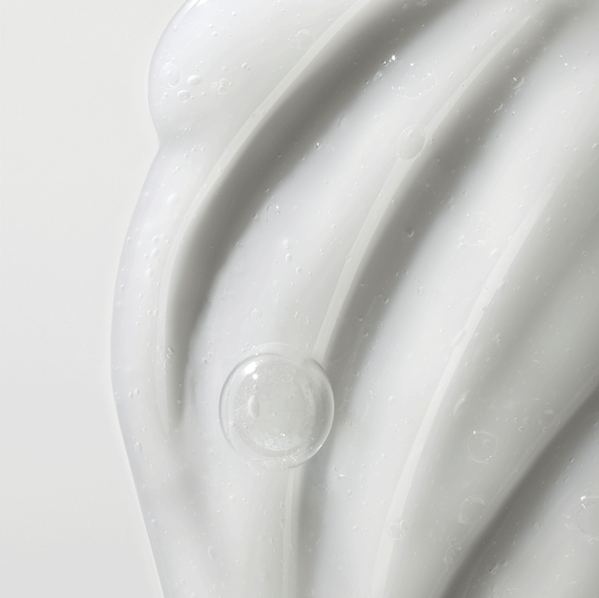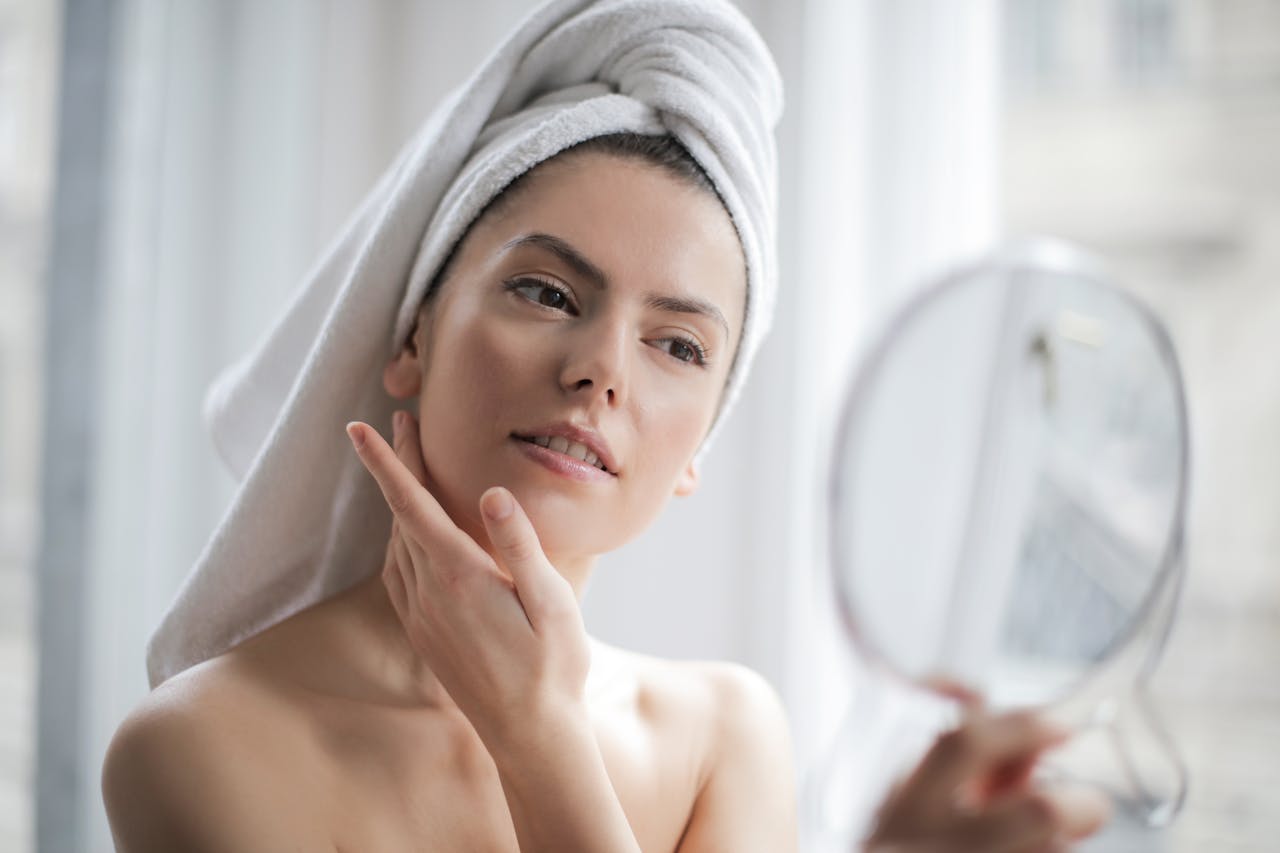If you've ever found yourself wondering, "Why is my skin so oily?" you're not alone. Oily skin is a common skin concern that affects people of all ages and backgrounds. It can be frustrating to deal with excess oil production, but the good news is that there are effective ways to manage it.
In this guide, we will explore the causes of oily skin, different skin types, and provide recommendations for skincare products and routines to help you achieve a balanced complexion.
Causes of Oily Skin
Delving into the root causes of oily skin involves examining both intrinsic factors like genetics and hormonal imbalances, as well as extrinsic elements such as environmental conditions and skincare habits. Understanding these interconnected aspects is crucial for developing effective strategies to manage and address excess sebum production.
1. Genetics and Heredity
One of the primary reasons why some people have naturally oily skin is down to genetics. If your parents or close relatives have oily skin, there's a good chance you've inherited this trait. Genetics influence the size and activity of your sebaceous (oil) glands, which are responsible for producing the natural oils that keep your skin hydrated.
Whilst you can't change your genetics, understanding their role can help you tailor your skincare routine to manage oily skin effectively.
2. Hormonal Changes
Hormonal fluctuations play a significant role in the development of oily skin. During adolescence, hormonal changes trigger an increase in oil production. This is why teenagers often experience acne and oily skin. However, hormonal imbalances can persist into adulthood and contribute to ongoing issues with oiliness.
Common hormonal factors that affect oil production include:
- Puberty: the surge in androgen hormones, such as testosterone, can lead to an increase in sebum production.
- Menstrual Cycle: many women notice oilier skin in the days leading up to their period
- Pregnancy: pregnancy hormones can also affect oil production, leading to changes in skin texture
- Polycystic Ovary Syndrome (PCOS): this hormonal disorder can result in increased androgens and, subsequently, oily skin.
Managing hormonal factors contributing to oily skin may require consultation with a healthcare provider or dermatologist.
3. Diet and Nutrition
We all know this - our diet can influence the condition of our skin, including how oily it appears. Consuming a diet high in sugar, fried, processed foods and dairy products may exacerbate oiliness and acne. These foods can lead to systemic inflammation and increased insulin levels, which, in turn, can stimulate sebum production.

On the other hand, a balanced diet rich in fruits, vegetables, and whole grains can promote healthier skin. Omega-3 fatty acids found in fish, flaxseed, and walnuts have anti-inflammatory properties and may help regulate oil production.
It's essential to stay hydrated as well. Drinking enough water ensures that your skin maintains its natural moisture balance and doesn't overcompensate by producing excess oil.
4. Environmental Factors
Environmental factors can also play a role in oily skin. Living in a hot and humid climate can lead to increased oil production as sebum secretion may flow more easily given the warmer temperatures. Additionally, exposure to pollutants and UV radiation can damage the skin and trigger an inflammatory response that can lead to oiliness.
If you’re using harsh cleansers or over-exfoliating, your skin might be stripped of its natural oils, prompting it to produce even more sebum to compensate.
How Do I Tell If I Have Oily Skin?
Identifying specific subtypes of oily skin can help tailor your skincare routines and treatments to address unique needs. Your skin type is determined by how much oil your facial skin produces - the two most common types are ‘oily’ and ‘combination’.
1. Oily Skin
Oily skin is characterized by excessive oil production, particularly in the T-zone (forehead, nose, and chin). Individuals with oily skin often have enlarged pores and are prone to blackheads, whiteheads, and acne breakouts.
Identifying oily skin:
- shiny complexion, especially in the T-zone
- large, visible pores
- frequent acne breakouts
- makeup tends to slide off quickly
- skin may feel greasy, even shortly after cleansing
2. Combination Skin
Combination skin is a combination of different skin types on various areas of the face. Typically, individuals with combination skin have an oily T-zone and drier or normal skin on their cheeks and other areas. Managing combination skin can be a bit more challenging, as it requires addressing both oily and dry areas simultaneously.
Identifying combination skin:
- Oily T-zone (forehead, nose, and chin)
- Dry or normal cheeks
- May have occasional acne or blackheads on the T-zone
- Makeup may need touch-ups in the T-zone but remains intact on cheeks
Understanding your skin type is crucial for selecting the right skincare products and routines to effectively manage oiliness and maintain a balanced complexion. Let's delve into skincare products specifically tailored for oily skin.
What Are The Best Skincare Products for Oily Skin?
1. Cleansers For Oily Skin
Choosing the right cleanser is the first step in managing excess oil production. Look for a gentle, foaming cleanser that can remove excess oil and impurities without over-drying your skin. Avoid harsh, alcohol-based cleansers, as they can strip your skin of its natural oils, leading to increased oil production.
Look for ingredients such as:
- Salicylic acid: salicylic acid helps unclog pores and control oil production.
- Glycolic acid: glycolic acid helps to exfoliate dead skin cells and improve skin texture.
- Gel-based: lightweight and non-comedogenic, gel cleansers effectively remove oil and impurities.
Recommendation: Revision Brightening Facial Wash
Contains Salicylic Acid (BHA) and Glycolic Acid (AHA) to gently help unclog pores, exfoliate dead skin cells, improve skin texture and reduce oil.
2. Toners For Oily Skin
Toners can help balance your skin's pH and remove any remaining traces of oil and impurities after cleansing. While not absolutely necessary to incorporate into your routine, if you choose to do so, opt for alcohol-free toners with ingredients like witch hazel or niacinamide. These can control oil production and minimize pores, but not strip the skin of needed hydration & protection.
Look for ingredients such as:
- Witch hazel: Witch hazel is a natural astringent that can help tighten pores and control oil.
- Niacinamide: Niacinamide (Vitamin B3) regulates sebum production and promotes a matte finish.
Recommendation: UnderSkin Perfect Balance Toner
This toner gently removes excess oil and impurities while restoring balance to the skin.
3. Hydrators and moisturizers for oily skin
Contrary to popular belief, even oily skin needs hydration and moisturization. Choosing a lightweight and oil-free moisturizer will help keep your pores unclogged and hydrated and can help balance your skin's oil production. The idea is to prevent your skin from overcompensating by producing excess sebum.
Look for ingredient labels on moisturizers such as:
- Oil-free: These are formulated to hydrate without adding extra oil.
- Non-comedogenic: These are formulated to not clog pores.
- Gel-based: Gel-based moisturizers provide hydration without a greasy feel and absorb quickly.
Recommendations:
Revision Hydrating Serum for an ultra-light, oil-free, anti-aging moisture formulated with hyaluronic acid.
SkinMedica HA5 Rejuvenating Hydrator with Hyaluronic Acid, Vitis Flower Stem Cell Extract and Peptide Complex for a truly radiance-boosting formula.
4. Mattifying products for oily skin
For those moments when you want to control excess shine and maintain a matte appearance throughout the day, consider incorporating mattifying products into your routine. These products can help absorb excess oil and keep your skin looking fresh.
Recommendations:
- Translucent setting powder: a translucent setting powder can be applied after sunscreen and/or makeup to give you a matte finish look.
- Mattifying primer: apply before makeup to create a smooth, matte canvas.
- Oil-absorbing sheets: convenient for on-the-go touch-ups to remove excess oil.
Understand, Identify and Treat
Understanding why your skin is oily is the first step in effectively managing this common skin concern. Genetics, hormones, diet, and environmental factors all contribute to oily skin, but with the right skincare routine and products, you can achieve a balanced complexion.
Identifying your specific skin type, whether it's oily or combination, allows you to tailor your skincare regimen to address your unique needs. Selecting the right cleansers, toners, moisturizers, and mattifying products can help you keep excess oil in check and enjoy a more comfortable and confident skincare experience.
Remember that consistency is key when it comes to managing oily skin. By incorporating the right products and techniques into your daily routine, you can achieve a healthy, radiant complexion that you'll be proud to show off.
Reviewed by Dr. Katharine Saussy, MD, FAAD (@drsaussy)








